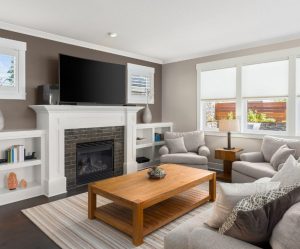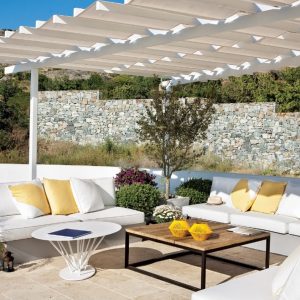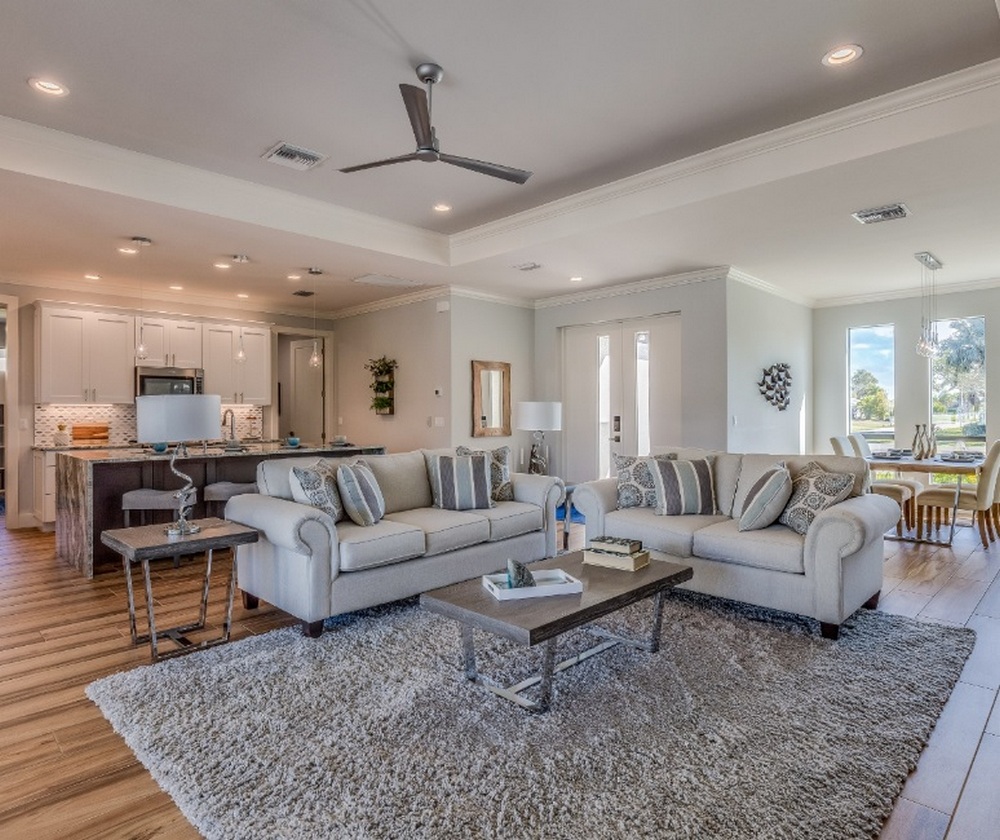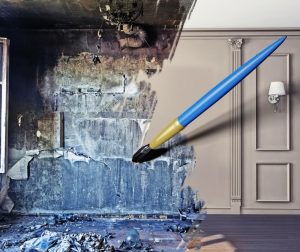Last Updated on March 14, 2024 by teamobn
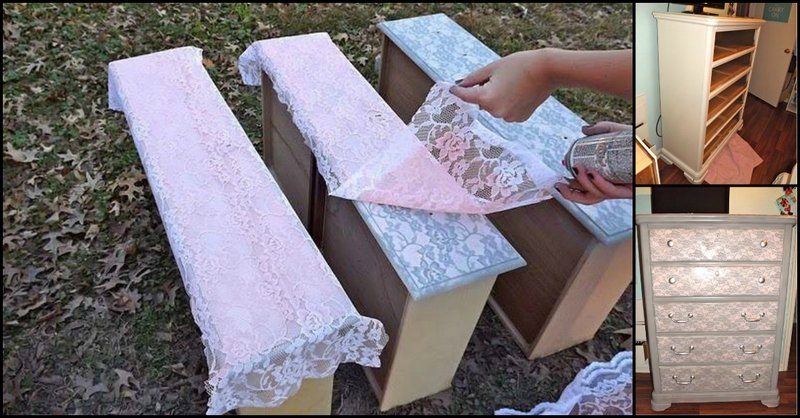
Giving your home a fresh, new look doesn’t always require making drastic changes. Sometimes all you need is to redesign certain elements in the room, such as furniture. Take a look at this great dresser with a lace effect painting!
A lace effect painting on a dresser is a good example to highlight your cabinet drawers with this artistic look. You can have these colored as rustic, plain black & white or colorful features that will give life to your living room or bedroom.
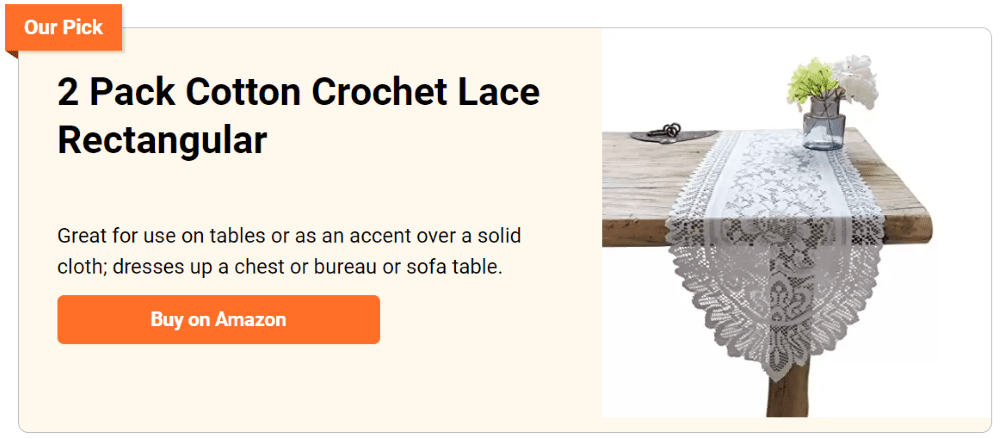
Has your dresser become aesthetically boring, but is still in good condition? Giving it a makeover could be easy as 1-2-3 — anyone can do it without trouble.
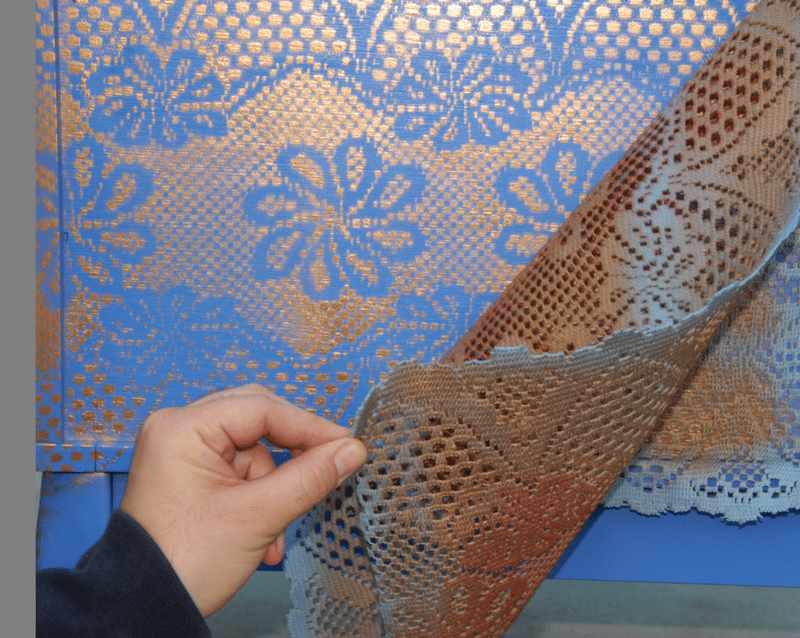
Creating a Lace Effect Painting on a Dresser
Lace fabrics are perfect for this project because of their intricate designs. As long as you’ve got complementing color choices, you will surely have impressive revamped furniture.
Materials
- Lace
- Spray Paint (your choice of colors, plus one metallic for the hardware)
Tools
- Screwdriver/Drill (to remove hardware before painting)
Instructions
1. Gather the materials
Gather the materials by choosing the color and type of design you want for your cabinet and getting your old lace patterned table wrapper.
2. Remove the dresser parts
Remove the drawer and handles by using the screwdriver.
3. Lay in the backyard
Lay the dresser and parts in the backyard or on the floor with old newspapers or cartons.
4. Temporary attach the lace pattern to your drawer
Temporarily attach the lace pattern to your drawer, you can use a tape or anything that can be easily removed after painting.
5. Paint your drawer
Use spray paint on your drawer, in any color you like.
6. Remove the lace pattern
After painting it carefully, remove the lace pattern and let it dry. We recommend two coats.
7. Paint with metallic colors
To spice up your drawer handles, paint them with metallic colors.
8. After drying
After drying, return them. Now you have a beautiful artistic drawer cabinet!
Thanks to Design-Innovate-Create for this great project. You can get the full step-by-step instructions here…
Lace Effect on Different Surfaces
The lace effect painting technique transcends its application on dressers, unveiling a world of possibilities for enhancing various surfaces within your home. This method, characterized by its intricate patterns and delicate aesthetics, can transform ordinary items into art pieces.
Here’s how lace effect painting can be applied to different surfaces to create unique and captivating décor elements.
Wooden Surfaces
Beyond dressers, lace effect painting on wooden surfaces such as tabletops, chair backs, and even wooden coasters can introduce a touch of elegance to your furniture. The natural texture of wood pairs beautifully with the intricate details of lace patterns, creating a contrast between the wood’s rustic feel and the lace’s sophistication.
Glass and Ceramics
Applying lace effect painting on glass vases, jars, or ceramic pots can elevate the look of your planters and storage containers. The translucency of glass combined with lace patterns creates stunning visual effects, especially when light passes through, casting beautiful shadows that add depth and intrigue to your space.
Metal Surfaces
Metal items like lamp bases, trays, and picture frames can be revitalized with lace effect painting. The metallic sheen peeking through lace patterns adds a luxurious touch, blending classic elegance with modern chic. This technique can breathe new life into old metal pieces, making them standout elements in your home décor.
Fabric and Textiles
While not a traditional painting surface, fabric and textiles can also benefit from lace-inspired designs. Using fabric paint or spray paint, you can apply lace patterns on curtains, cushion covers, or even T-shirts. This approach adds a personalized touch to your textiles, allowing you to coordinate your fabrics with other lace-painted items in your room.
Walls and Floors
For those who dare to make a bold statement, lace effect painting can be applied directly to walls or floors. Creating an accent wall with a large lace pattern can serve as a stunning backdrop for any room, while painting a lace effect on a wooden floor can add an element of surprise and sophistication underfoot.
Incorporating lace effect painting across different surfaces requires creativity and a willingness to experiment. Each surface offers a unique canvas for the delicate and detailed patterns of lace, allowing for endless possibilities in home décor. Whether you’re refreshing furniture, accentuating small décor items, or embarking on a larger design project, lace effect painting can achieve a transformative impact, infusing your space with elegance and charm.
Click on any image to start the lightbox display. Use your Esc key to close the lightbox. You can also view the images as a slideshow if you prefer ![]()
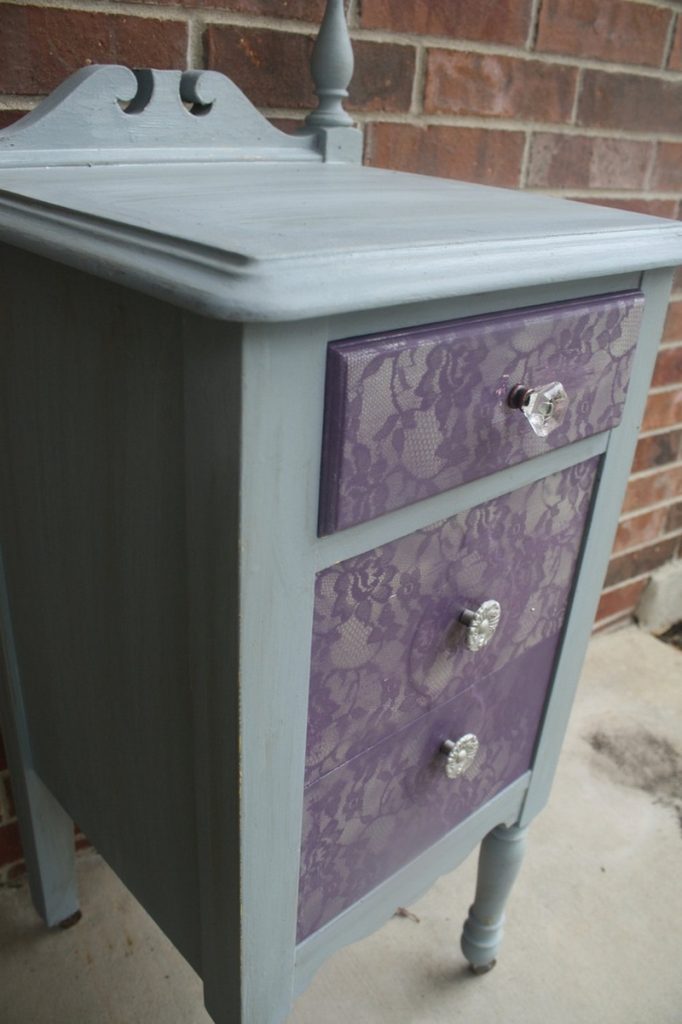
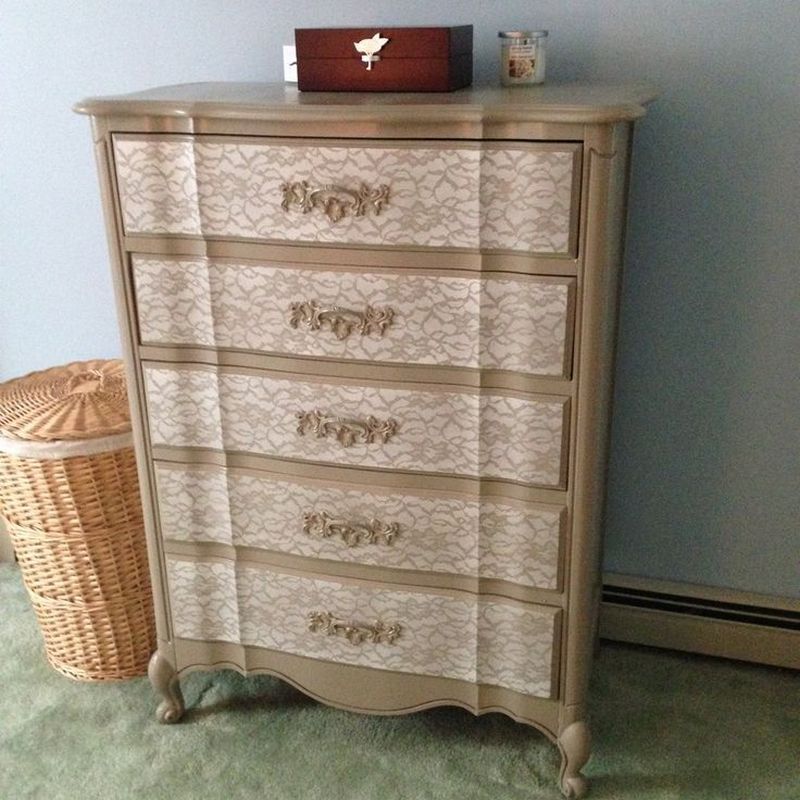
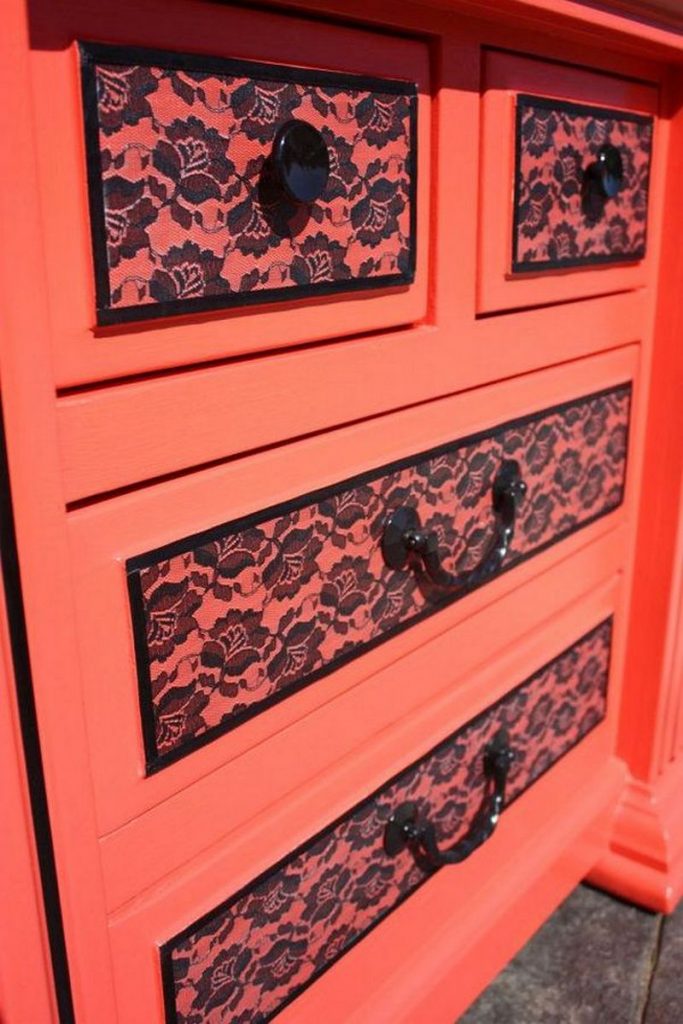
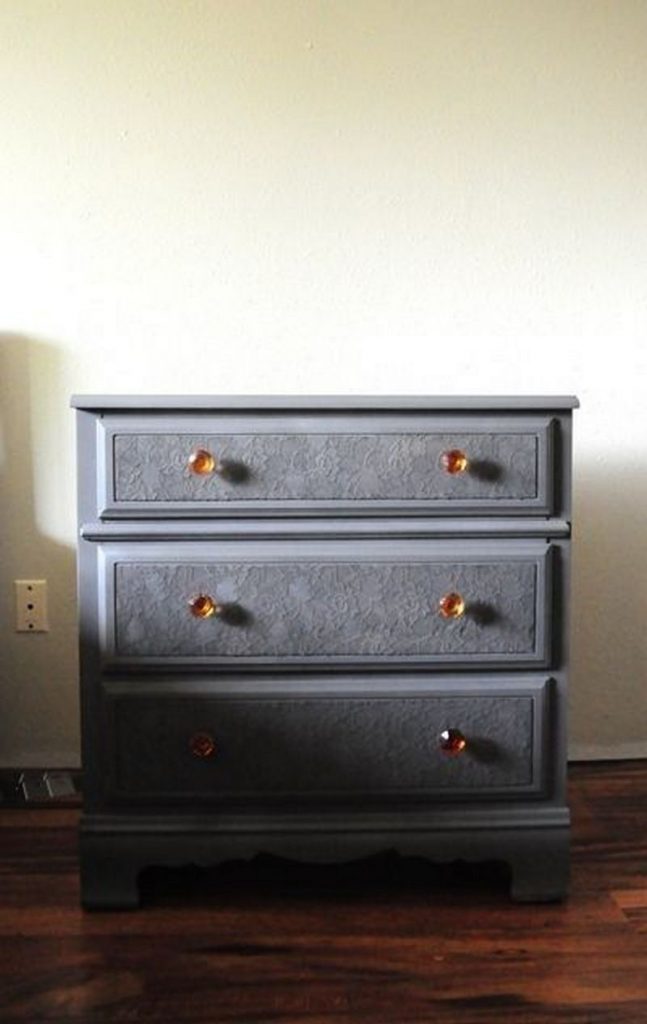
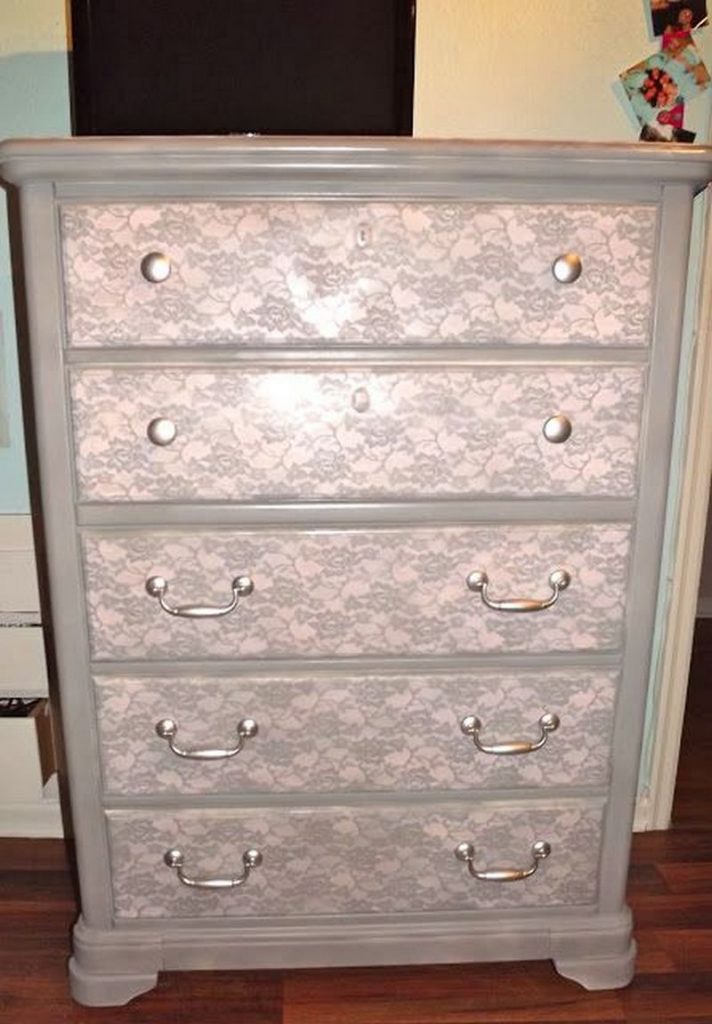
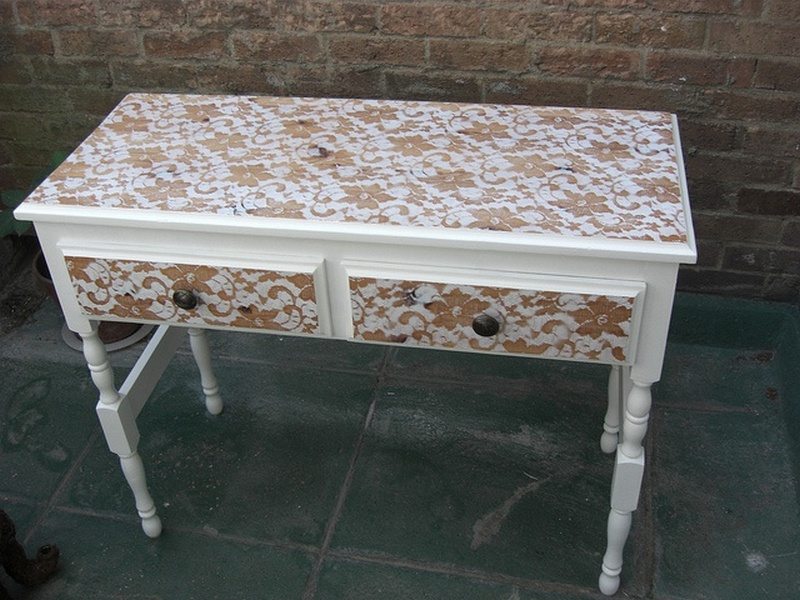
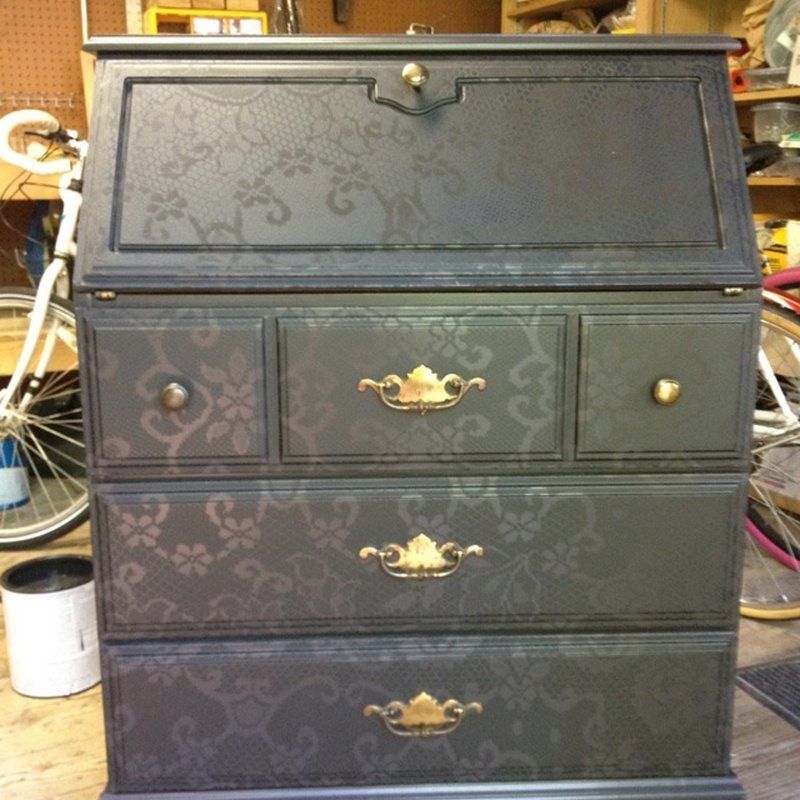
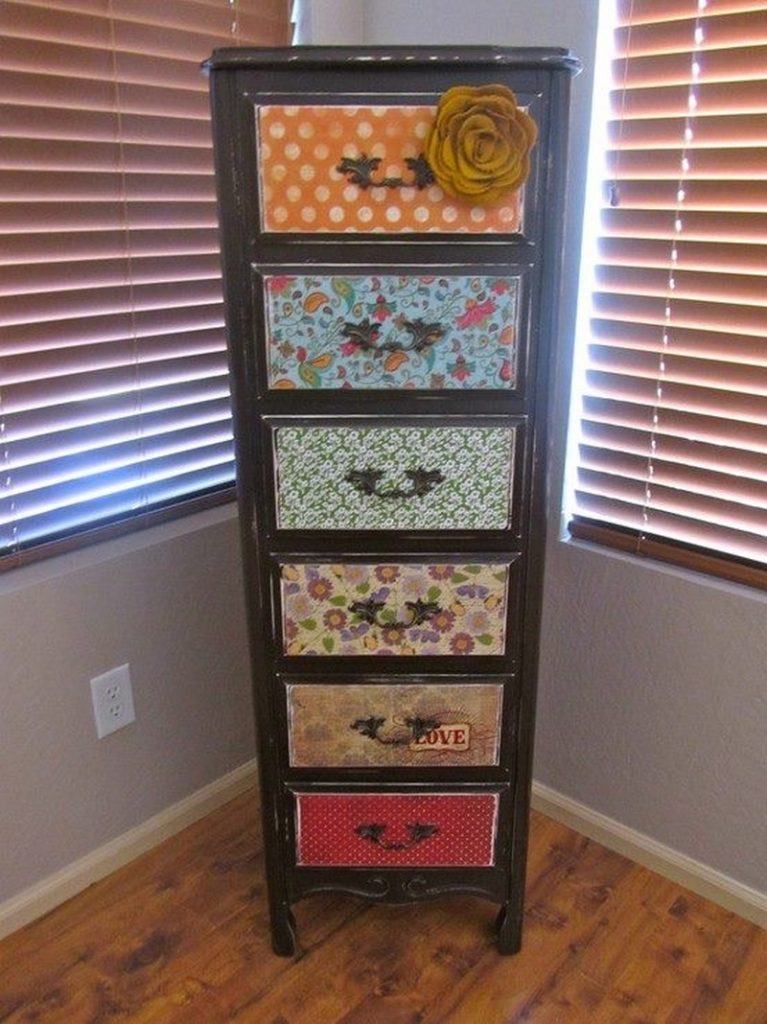
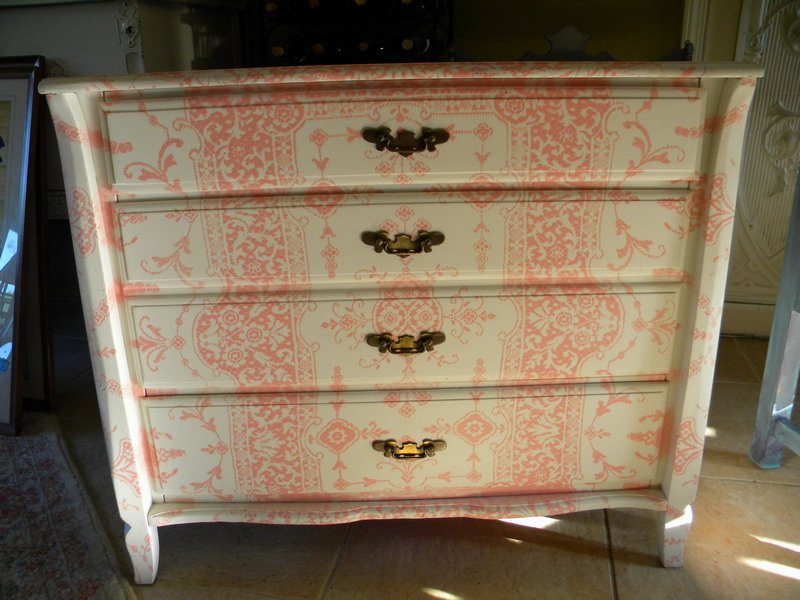
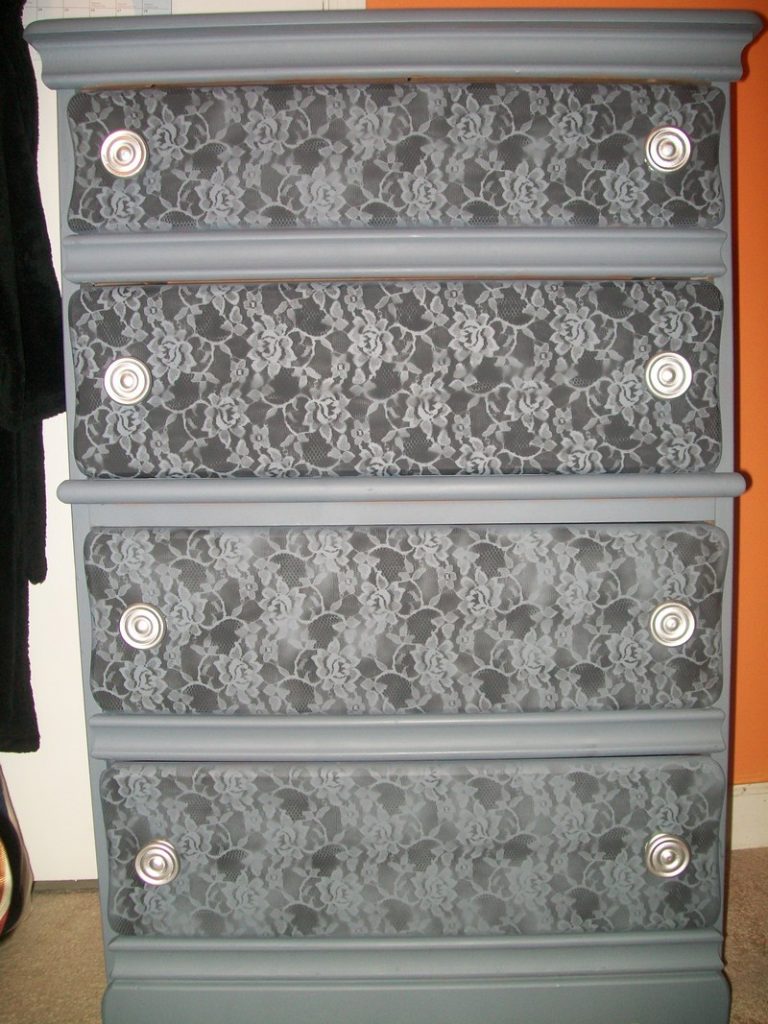

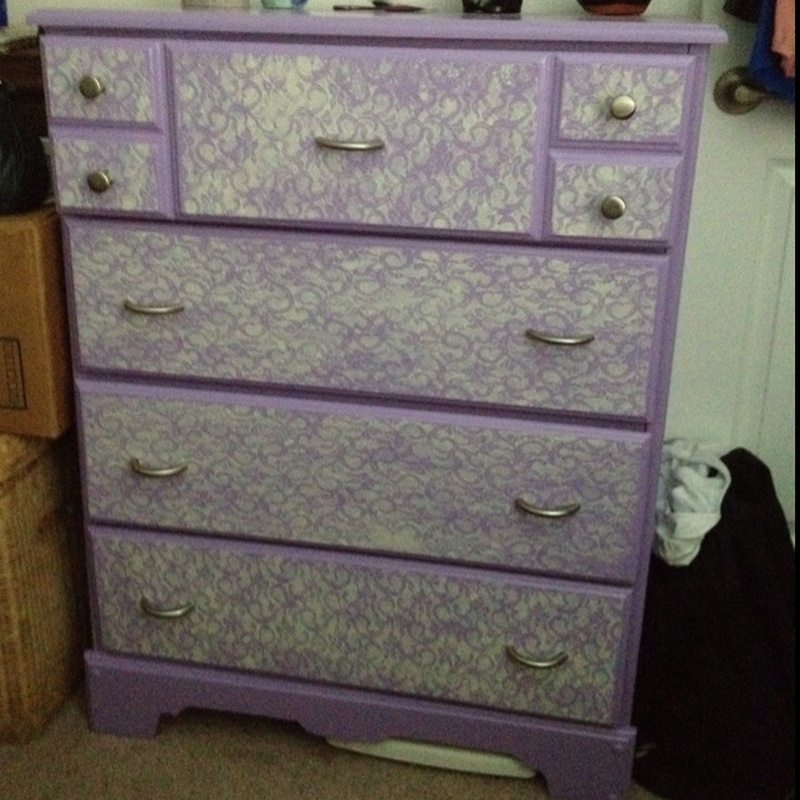
Color Theory in Lace Effect Painting
The infusion of color theory into lace effect painting elevates the art form, transforming simple pieces into masterpieces that resonate with emotional depth and visual harmony. Understanding color theory is paramount when undertaking lace effect painting projects, as it not only the aesthetic outcome but also the mood and ambiance of the space.
This section delves into how strategic color choices can enhance lace effect painting, making it a crucial aspect of the process.
The Importance of Color Choices
For lace effect painting, the selection of colors is pivotal in bringing the intricate details of lace patterns to life. This artistic endeavor relies heavily on the synergy between colors to create a captivating visual narrative.
The correct pairing of colors can illuminate the delicate beauty of the lace, making each curve, loop, and swirl stand out in exquisite detail. Conversely, an ill-considered color match can obscure the lace’s intricate designs, causing the piece to lose its charm and intricacy.
The challenge, and indeed the art, lies in choosing colors that complement each other and harmonize with the environment where the piece will reside. This consideration ensures that the lace effect painting enhances the space’s overall aesthetic without clashing with its existing palette.
It’s about striking a balance between boldness and subtlety, where the colors used can make a statement or blend seamlessly into the decor, depending on the desired outcome. Mastery of color selection can transform a simple piece of furniture or decor item into a cohesive element that ties a room together, making color choices an essential pillar of lace effect painting.
Monochromatic Schemes
Monochromatic color schemes represent a nuanced and sophisticated approach in the world of lace effect painting. By employing various shades, tints, and tones of a single hue, this strategy introduces depth and complexity to the artwork without the need for contrasting colors. The beauty of this scheme lies in its simplicity and the subtle variations that emerge from using one color in multiple intensities.
Imagine the serene beauty of a dresser adorned with a lace effect in shades of blue. A soft, sky blue is the base, evoking a sense of calm and openness.
Atop this tranquil backdrop, a deeper, navy blue lace pattern weaves across the surface, creating a striking contrast that captivates the eye without overwhelming it. This monochromatic play highlights the lace design’s elegance and adds a layer of sophistication to the piece.
Such a technique is particularly effective in spaces seeking a harmonious and unified aesthetic. The monochromatic approach can anchor a room, providing a focal point that draws together various decor elements.
It offers a visual rest in busy spaces or amplifies the serene quality of minimalist designs. Through the thoughtful application of monochromatic color schemes, lace effect painting achieves a balance of serenity and sophistication, making it a versatile tool in the interior design palette.
Complementary Colors
The use of complementary colors in lace effect painting is a powerful technique to infuse energy and vibrancy into any piece. These colors, situated directly opposite each other on the color wheel, possess a natural contrast that is visually striking. When applied to lace effect painting, this contrast becomes a dynamic interplay that accentuates the exquisite detail of the lace pattern against the backdrop.
Imagine the transformative effect of applying a rich, mustard yellow to the surface of a dresser, setting the stage for a deep violet lace design to dance across its drawers. This combination does not just make the piece pop; it injects it with a lively energy that becomes a focal point of any room. Such bold contrasts are especially effective in lace effect painting projects aimed at revitalizing spaces with eye-catching accents.
This approach is not only about creating a visual impact but also about evoking emotional responses. The deliberate pairing of complementary colors can set the mood of a room, from the warmth and excitement of a red and green combination to the calm and serenity of a blue and orange pairing. Lace effect painting with complementary colors offers a palette of possibilities for transforming mundane furniture into breathtaking statement pieces.
Analogous Colors
In contrast to the boldness of complementary colors, analogous colors in lace effect painting offer a subtler, yet equally captivating, visual experience. These colors, which sit next to each other on the color wheel, share a common base hue, making them inherently harmonious.
This harmony lends itself beautifully to lace effect painting, where the gradual transition between colors can mimic the delicate gradations found in natural landscapes or the soft blending of hues at dusk.
Consider the serene beauty of a wall art piece, where a lace effect painting utilizes a blend of forest green, soft teal, and a whisper of sky blue. This combination mimics the seamless transitions found in nature, creating a piece that feels both cohesive and richly layered.
With its intricate details, the lace pattern benefits from the analogous color scheme by gaining depth and dimension, allowing each swirl and curve to be appreciated in its full complexity.
Analogous colors in lace effect painting encourage a sense of unity and flow, making them ideal for projects aiming to create a peaceful and cohesive atmosphere. Whether it’s a piece of furniture, a canvas, or a decorative item, using a trio of analogous colors can elevate the lace effect to new heights of elegance and subtlety. This technique allows for the exploration of color in a way that is both sophisticated and harmonious, ensuring that the lace effect painting harmonizes with its surroundings while still making a distinct visual statement.
Accent Colors
The strategic use of an accent color in lace effect painting can dramatically transform the visual impact of a piece, injecting it with vibrancy and character. This method involves choosing a subdued, neutral base color as the canvas for a strikingly bold or bright hue that forms the lace pattern. The juxtaposition of a neutral background with a vibrant lace design ensures that the intricate details of the lace are not just seen but truly celebrated, becoming the star of the show.
Envision a sleek, modern dresser bathed in a soft, dove gray. A vivid turquoise lace effect pattern unfurls across its surface atop this understated background. This unexpected burst of color against the neutral base captivates the eye and transforms the dresser into a pivotal design element within the room. Such a piece can single-handedly elevate the aesthetic of a space, introducing a dynamic focal point that infuses the room with personality and flair.
Lace effect painting with accent colors proves especially beneficial in spaces dominated by monochromatic schemes or minimalist designs. Introducing a bold lace pattern can break the monotony, adding depth and interest. Whether it’s a pop of electric blue against white or a dash of sunny yellow against beige, the accent color technique in lace effect painting offers endless possibilities to customize and invigorate your décor.
Considerations for Mood and Atmosphere
The influence of color choices in lace effect painting extends beyond mere aesthetics, reaching into the emotional and atmospheric impact realm. The hues selected for a lace effect project can alter a room’s mood, influencing how the space feels and how individuals react to it.
With their inherent vibrancy and energy, warm colors can transform an area into a welcoming and stimulating environment, perfect for social spaces like living rooms and kitchens. A lace effect piece in warm tones can add a touch of warmth, making the space feel cozy and inviting.
Conversely, cool colors, known for their calming properties, can infuse a room with tranquility and serenity. Applying a lace effect in cool hues to a bedroom or bathroom can create a peaceful retreat, a haven for relaxation amidst the hustle and bustle of daily life. The delicate intricacies of a lace pattern, combined with a soothing palette, can enhance the calming atmosphere, making the space more conducive to rest and rejuvenation.
The mood and atmosphere that lace effect painting brings to a room are not just byproducts of color theory but are integral to the design process. It necessitates thoughtful consideration of the room’s function, the desired emotional response, and the overall design scheme.
By skillfully selecting colors for lace effect painting projects, one can craft spaces that look beautiful and feel harmonious and aligned with the occupants’ needs and preferences. This thoughtful approach ensures that the lace effect contributes not only to the visual appeal of a space but also to its emotional resonance and atmosphere.
Incorporating color theory into lace effect painting allows for a more strategic and impactful approach to decorating. By carefully selecting and combining colors, you can enhance the intricate beauty of lace patterns and create pieces that harmonize with the surrounding space, elevating the overall aesthetic of your home.
Choosing the Right Lace Pattern for Your Project
Choosing the right lace pattern for your lace effect painting project is as crucial as selecting the perfect palette. The pattern not only defines the aesthetic appeal of the piece but also its uniqueness and charm. Lace, with its intricate designs and delicate textures, can transform a simple object into an exquisite work of art.
This guide will help you navigate through the choices to find the perfect lace pattern that aligns with your project’s vision and enhances its beauty.
Understanding Lace Patterns
Lace patterns range from simple, geometric designs to complex, floral arrangements. Each pattern carries its own character and can convey different styles and moods.
For instance, a geometric lace pattern might lend a modern, sophisticated look, while a floral design could evoke a sense of vintage elegance. When selecting a lace pattern for your lace effect painting project, consider the overall design theme of the item or space where the piece will reside.
Consider the Scale and Complexity
The scale of the lace pattern plays a significant role in its impact. Larger, bolder patterns stand out and are suitable for bigger pieces or spaces where you want the lace effect to be the focal point. Smaller, more intricate designs work well on compact items or in subtler applications, where the goal is to add a touch of elegance without overwhelming the piece.
The complexity of the design also matters. Highly detailed patterns can add a rich, luxurious feel but might be more challenging to replicate with paint. Simpler designs, while easier to work with, can offer a sophisticated touch if chosen carefully and executed well. Your skill level and the time you can dedicate to the project might influence your choice here.
Matching Pattern with Purpose
The purpose of the piece should guide your lace pattern selection. For furniture pieces that serve as statement items in a room, opting for a bold, eye-catching pattern can elevate the room’s aesthetics. Conversely, if you’re enhancing decorative items or textiles, a more subdued, delicate pattern might be appropriate, adding sophistication without dominating the space.
Testing Your Pattern
Before committing to a lace pattern for your project, it’s wise to test it out. You can do this by replicating a small section of the pattern on a similar material or surface. This test run will give you a feel for the pattern’s complexity and suitability and allow you to see how it interacts with the chosen colors and the surface.
Flexibility and Adaptability
Remember, lace effect painting is an art form that allows for creativity and flexibility. Don’t be afraid to adapt a pattern to better suit your project. This could mean altering the scale, simplifying complex areas, or combining elements from different patterns to create something unique.
Choosing the right lace pattern is a vital step in ensuring the success of your lace effect painting project. It influences not only the visual appeal but also the emotional resonance of the finished piece. By considering the pattern’s scale, complexity, and alignment with the project’s purpose, you can select a design that enhances the beauty of your work and brings your creative vision to life.
Conclusion
Applying lace effect painting to furniture transforms ordinary pieces into unique works of art, infusing them with elegance and sophistication. This technique allows for a creative expression that can complement any interior design style, making each piece a focal point in the room. With the right choice of colors and lace patterns, anyone can elevate their furniture, giving it a second life and a new story to tell.
If you liked this, you might also like these furniture ideas…


